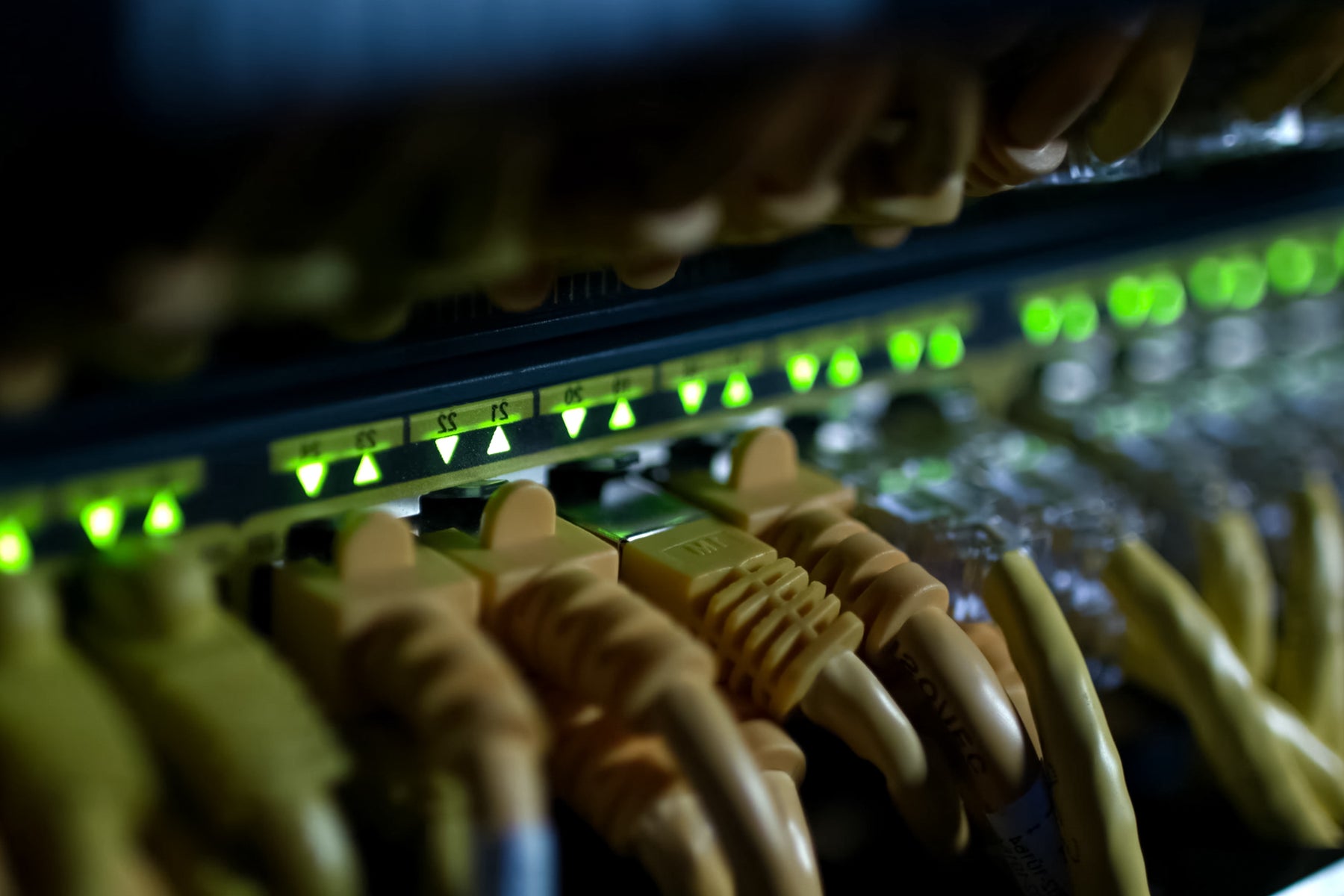
Buyer’s Guide: Managed vs Unmanaged Switches
Aruba is an industry-leading manufacturer of network solutions, with network switches being one of their specialties.
Aruba switches offer premium-grade edge access switch solutions of many different types and capabilities to cater to different needs: from SMB networks to medium-sized businesses to larger enterprises.
Being a subsidiary company to Hewlett Packard Enterprise (HPE), Aruba switches feature HPE's smart-rate multi-gigabit ports, allowing reliable high-speed connectivity at the edge.
Aruba offers both managed and unmanaged network switches, each with its own characteristics, benefits, and drawbacks for different use cases. The main difference between the two is the amount of flexibility/control you have over the configurations of the switch.
In this post, we will discuss all you need to know about managed and unmanaged switches from Aruba, so you can make a better-informed purchase decision according to your business's situation, needs, and objectives.
What is a Managed Switch?
Both managed and unmanaged switches offer the same core functionality: connecting devices to the network, mainly via Ethernet connectivity. However, a managed switch offers additional features not offered by unmanaged switches.
Managed switches, as the name implies, can be fully "managed," making it possible to fully monitor, configure, manage, and troubleshoot virtually any elements of the managed switch's performance. Due to the level of customization offered, managed switches can be considered "smart" switches, thanks to their versatility allowing intelligent use cases.
Each managed switch has its own IP address, allowing unique identification. This allows us to perform many types of configurations, like prioritizing channels based on data importance, accurately pinpointing performance issues, and even allowing the creation of virtual networks and segmentations.
Another key consideration when choosing between managed and unmanaged switches is the fact that managed switches offer an additional layer of security over unmanaged switches. Since managed switches allow us to monitor and control network events accurately, threats can be identified and mitigated quickly, preventing data breaches and other cybersecurity issues.
In terms of use cases, managed switches are typically deployed as a foundation of an enterprise's network to monitor and control traffic, especially for connecting high-risk or mission-critical equipment to ensure optimal performance and/or data security.
What is an unmanaged switch?
Unmanaged switches, on the other hand, have only a single functionality: connecting devices via Ethernet to facilitate communication between these devices. Unlike managed switches, they do not allow any configuration, and most won't require any setup during installation.
However, the lack of customizability also means unmanaged switches are much simpler to deploy and, in most cases, are plug-and-play. Unmanaged switches are also more affordable than comparable managed switches, so they are often used in smaller networks or when connecting a temporary device (or group of devices) to a larger network.
Basically, if the use case of a device doesn't require too much versatility and performance monitoring, as well as when the cost is an issue, unmanaged switches can be an ideal choice.
Key Differences Between Managed and Unmanaged Switches
To summarise, there are four key differences between managed and unmanaged switches:
1. Customizability
Managed switches allow users to monitor, manage, and fully configure the Ethernet connection. In practice, this freedom of configuration allows users to manage traffic more effectively and to create new segmented LANs. Managed network switches also often offer advanced security features, like data recovery features allowing users to recover data in the event of network failure.
However, this freedom of configuration may also translate into a steeper learning curve, while unmanaged switches are typically easier to set up and deploy (plug and play)
2. Security Features
Most unmanaged switches only offer basic security features, mostly physical protection such as a lockable port cover to prevent tampering.
On the other hand, managed switches are often equipped with advanced security and monitoring features, allowing users to more quickly and accurately identify threats and mitigate these threats as soon as possible.
3. Performance Optimization
Unmanaged network switches cannot be configured, and most of them have built-in QoS features to ensure easy setup and deployment.
However, managed switches offer many advanced monitoring and optimization features, allowing users to easily manage performance by prioritising the channel in question. Managed switches also often leverage protocols such as SNMP (Simple Network Management Protocol) to allow comprehensive monitoring of the network's performance. SNMP also enables remote management of the network and all connected devices without requiring any physical intervention.
4. Cost
Managed devices are always more expensive than comparable unmanaged switches due to their more advanced, robust set of features. On the other hand, unmanaged switches are typically available in more affordable price ranges.
Choosing Between Managed and Unmanaged Switches
Still not sure whether to choose an unmanaged or managed switch according to your use case? Here are four considerations you should have:
1. Security
How important are data security and integrity for you? Does your network involve the transmission of sensitive/regulated data?
If security is a priority, then managed switches are an ideal choice. Managed switches allow for comprehensive monitoring, facilitating quicker identification of threats and attacks. Managed switches also allow network segmentation, so users can easily implement access control to allow only authorised users and devices to access this data.
2. Downtime
How long of downtime can you afford?
If you'd want to minimise or even eliminate downtime, then you should opt for managed switches with their downtime protection and other built-in redundancy protection features.
Managed switches can also control and optimise traffic to make sure mission-critical information goes through.
3. Configuration
How important is the ability to manage, monitor, and configure your LAN (including things like channel prioritisation and channel to optimise? If these things are important, then you should get a managed switch instead.
4. Monitoring and Analytics
Having a managed switch in place means users can easily get updates on network performance and notify you of the detection of potential problems as soon as possible. This can help mitigate damages in the event of successful cyberattacks.
Conclusion
To help you connect your crucial devices over Ethernet, Aruba offers complete lines of both unmanaged and managed network switches.
Managed switches are more versatile and are designed to support organisations that need to optimise performance and security. On the other hand, unmanaged switches offer simplicity in setup and deployment.
No matter which Aruba switch you choose, here at IT Yuda, we can help you in making your decision and making sure you are choosing the right network switch solution according to your needs and objectives.
